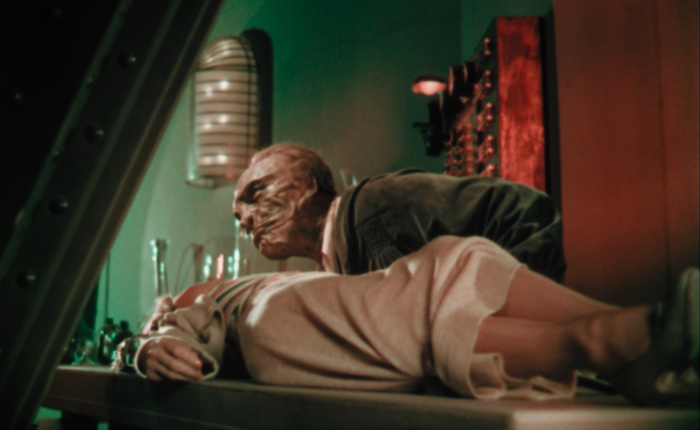
Warner Brothers’ Mystery Of The Wax Museum (1933) was the last feature film to be shot with Technicolor’s two-strip process and remains the artistic pinnacle of that short lived format. For a long time Mystery Of The Wax Museum was presumed “lost” in its original format, but over the course of some ninety years the film was cobbled together and restored to its original glory. In that interim where Mystery Of The Wax Museum existed in modified forms the film itself found a new longevity in remakes and films inspired by its macabre premise, including André De Toth’s House Of Wax (1953) starring Vincent Price.
None of the imitators or remakes ever really came close to the achievement of Mystery Of The Wax Museum. The irony of this is that Warner Bros. conceived of Mystery Of The Wax Museum as a low budget cash-in on an already successful feature, recycling music, sets, and personnel from the film Doctor X (1932). But Mystery Of The Wax Museum is a piece of pre-code cinematic art. The moody images of cinematographer Ray Rennahan evoke both art deco and German expressionist sensibilities while director Michael Curtiz proves again that his strong suit has always been collaborating with actors.
Curtiz’s strengths are evident throughout Mystery Of The Wax Museum, particularly in Glenda Farrell scenes of rapid banter. Mystery Of The Wax Museum has two distinctive narrative styles: macabre horror and the pulpy adventure. Both aesthetics are unified by Curtiz’s interest in spacial relationships between characters and their environment. Consider how the camera tracks the villainous Lionel Atwill through his studio. The space is as informative and reflective of the character as Atwill’s expressive face. It’s a subtle strategy on Curtiz’s part, but it is one he retained and used to great effect in his best known picture Casablanca (1942) with regards to Rick and his bar.
In this atmospheric genre mash-up the original scream queen Fay Wray may get second billing but the show clearly belongs to the feisty Farrell. Farrell cuts through scenes with a charismatic charm and wit only to turn on a dime and throw herself into an adrenaline induced frenzy. Farrell is never the damsel in distress, always the spunky ace reporter.
The autonomy and big personality of Farrell’s protagonist contrasts with the overt commodification of the human body in Mystery Of The Wax Museum. Farrell is too fierce and too kinetic to fall prey to the process of absolute objectification that threatens Fay Wray. Atwill’s villain, like the big studios and the tabloids, desire to commodify and possess starlets like Wray. Intentionally or not, this social commentary runs throughout Mystery Of The Wax Museum and all of the similar films that have followed it, from Waxwork (1988) to Tourist Trap (1979).
All of this contributes to the enduring legacy and relevancy of this pre-code horror classic. Mystery Of The Wax Museum may be almost one-hundred years old but it still remains an affecting work of cinematic beauty. The fact that it is one of the few surviving feature films shot with the two-strip process makes it something unique. Hardly another film looks and feels like Mystery Of The Wax Museum which is why it is so essential.
